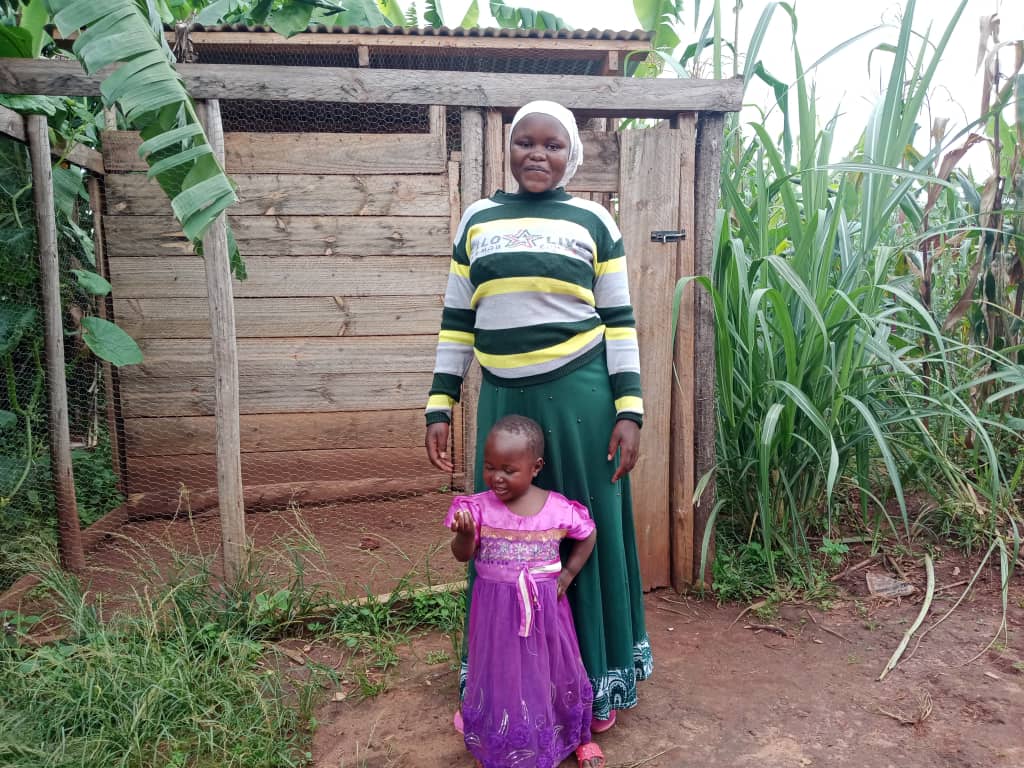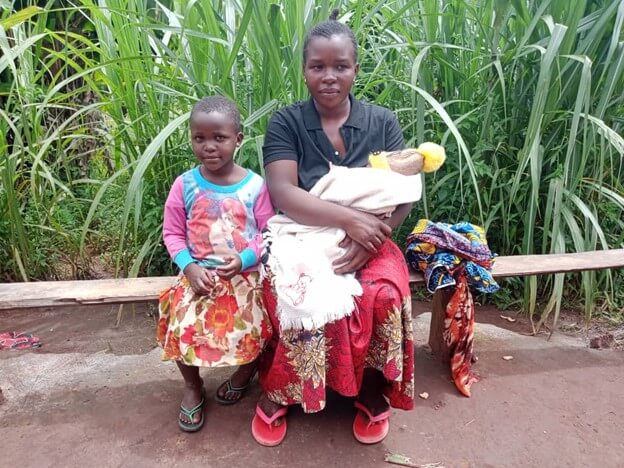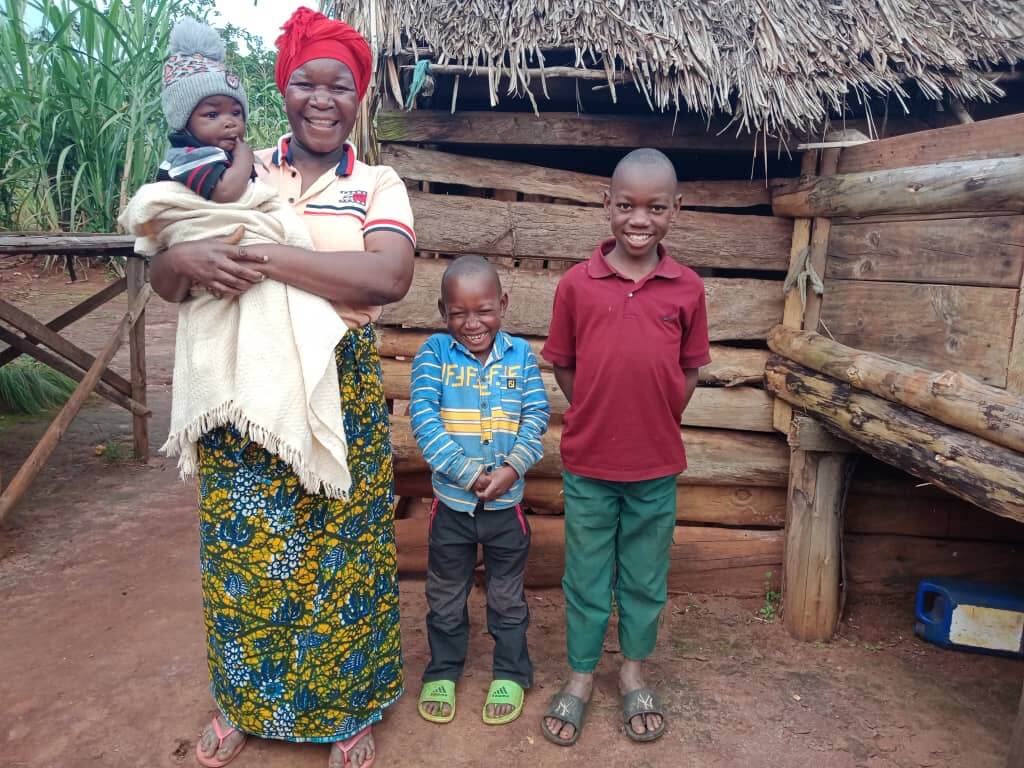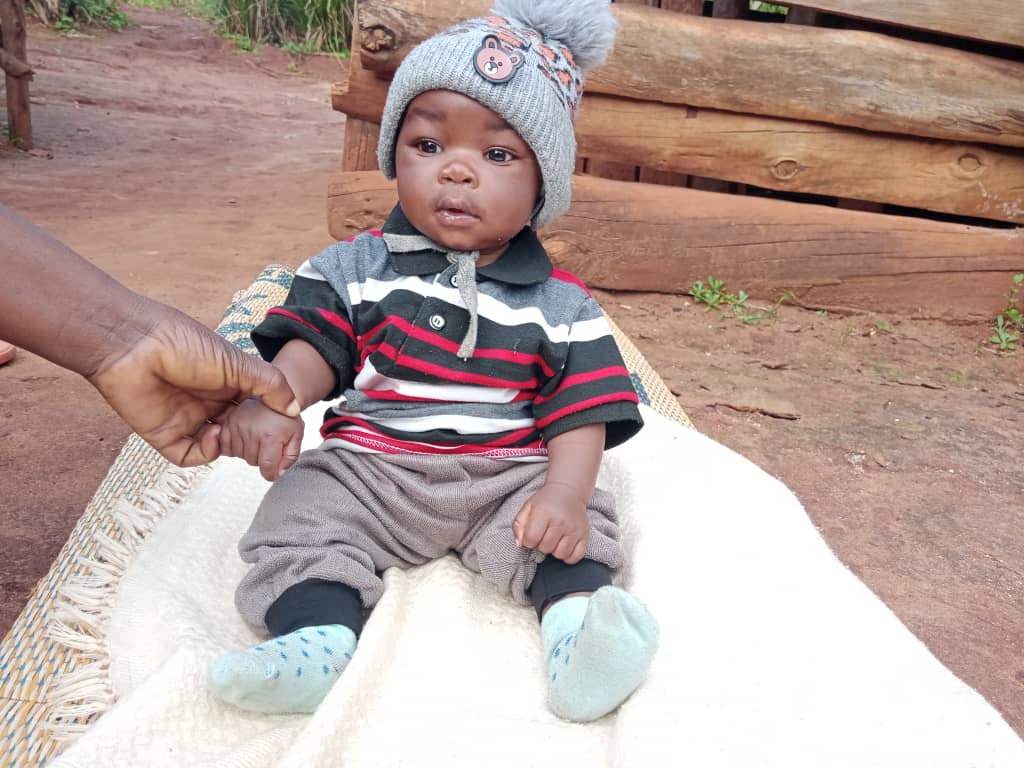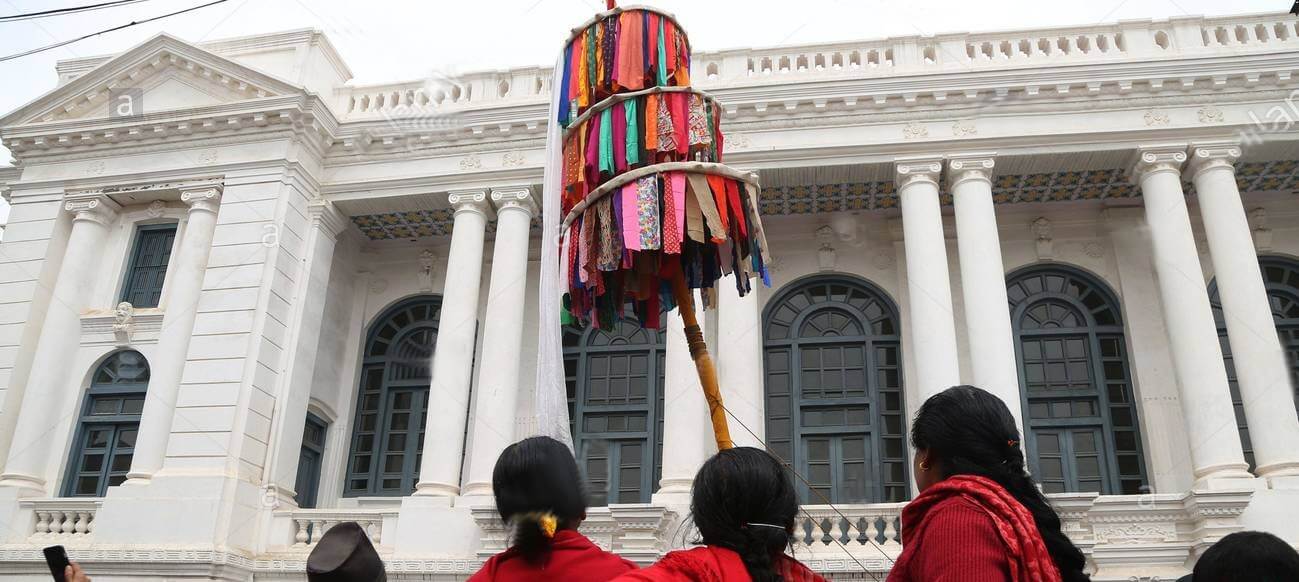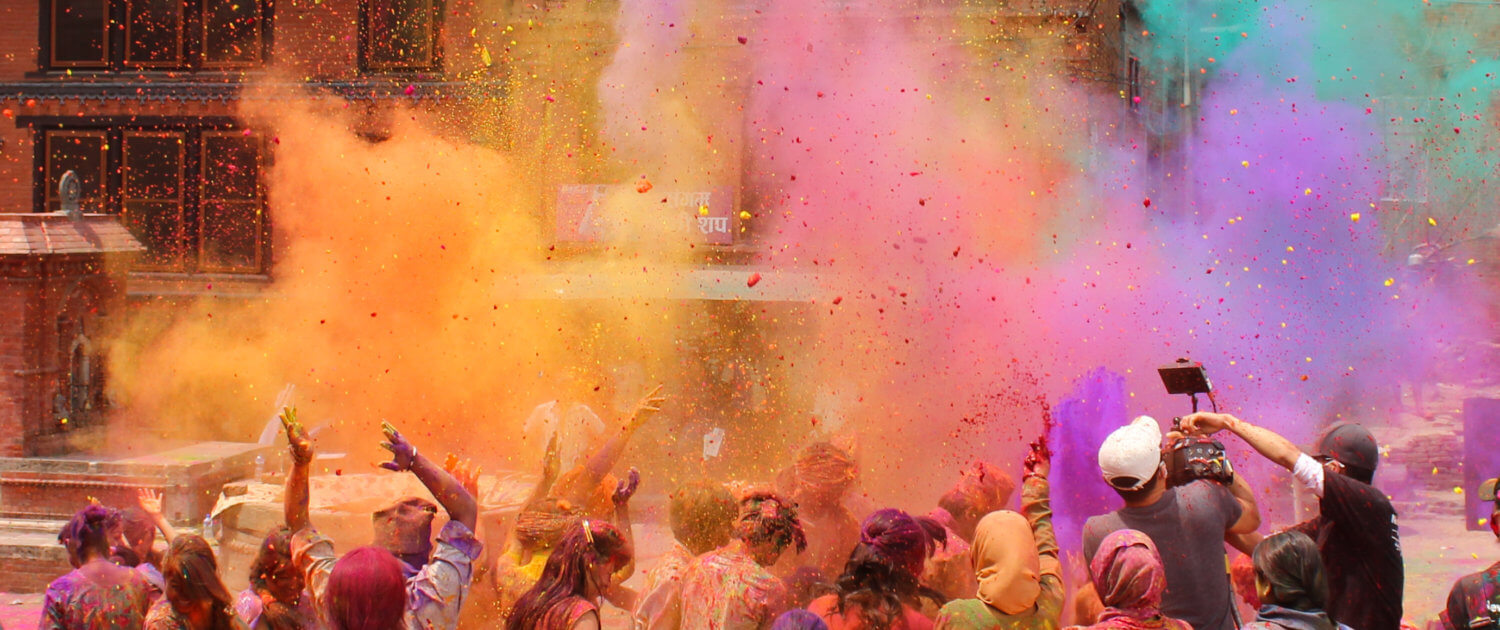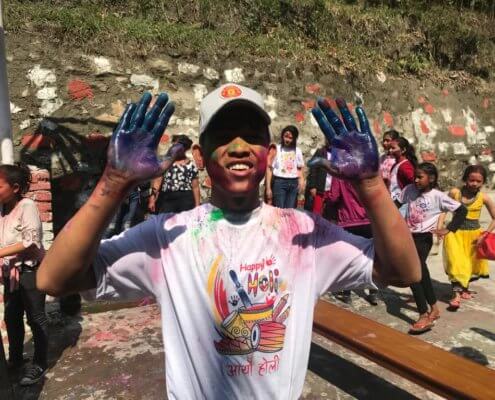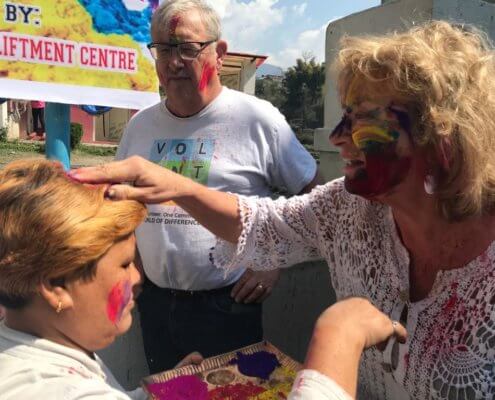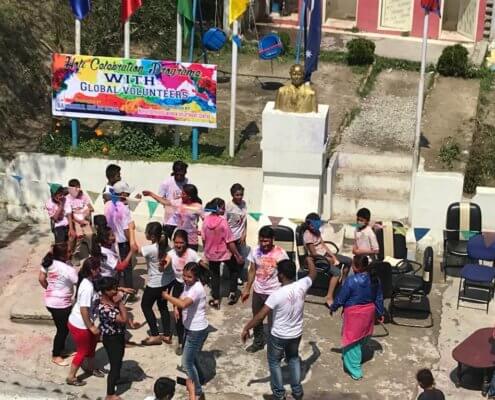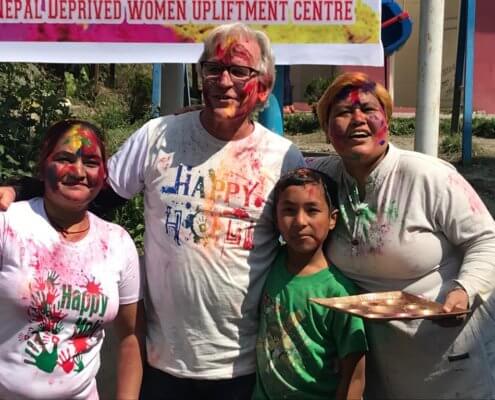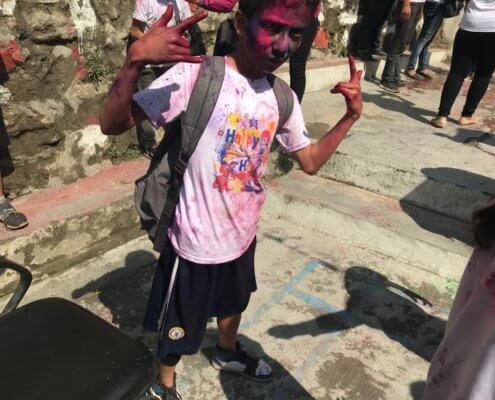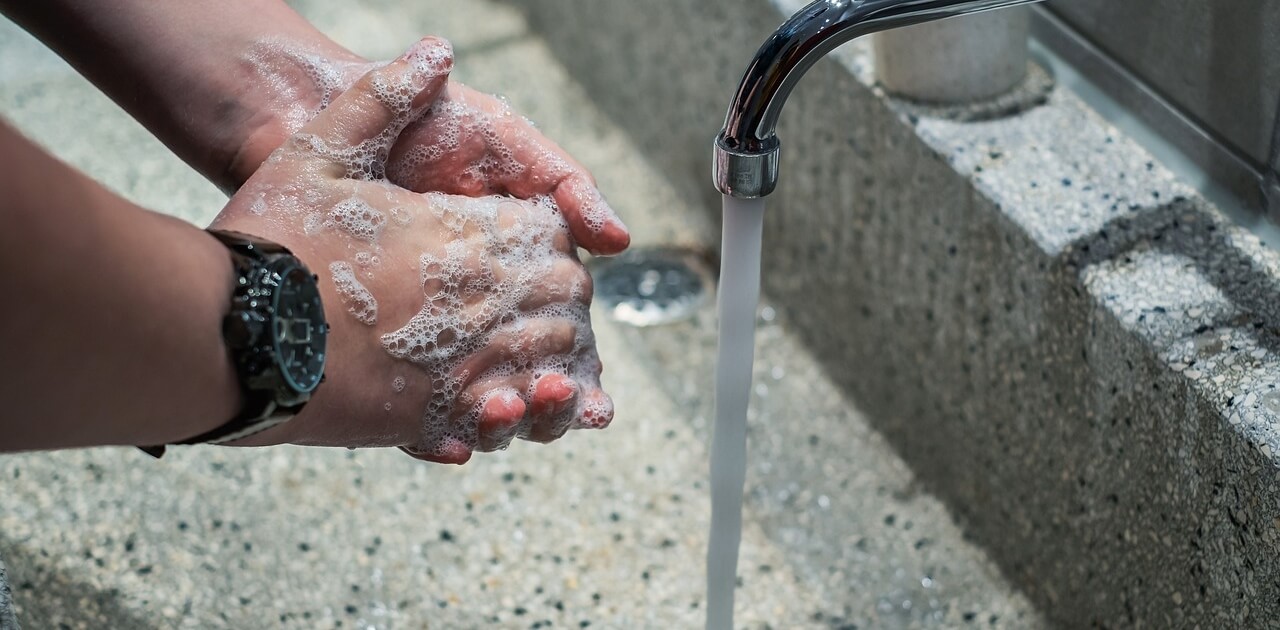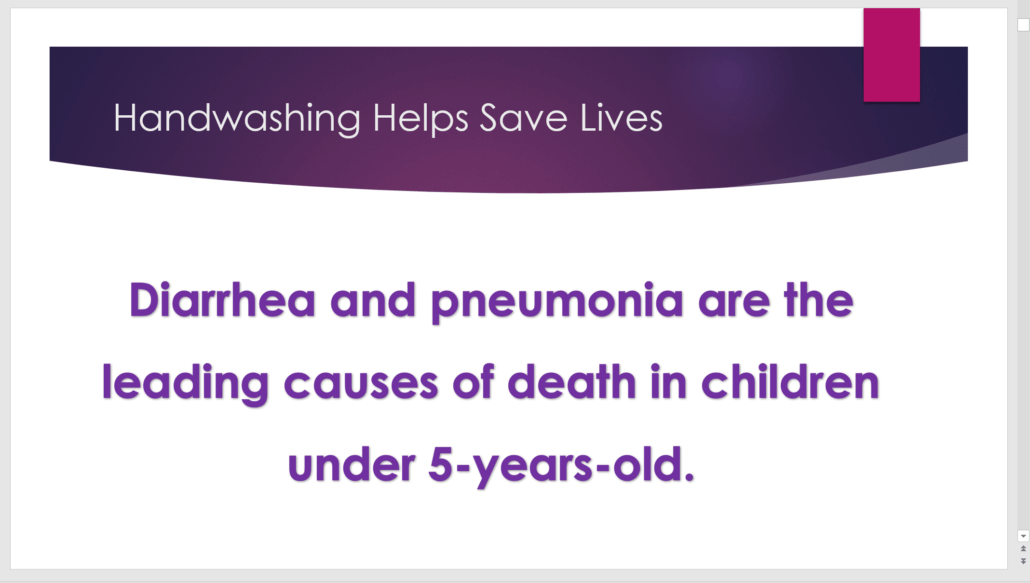The faded and peeling murals and empty classrooms at Sagrada Familia bear witness to the punishing lockdown during the pandemic. But the children’s cheery demeanor and spring blooms on trees and stems belie the stress of 19 continuous months of isolation. On the first service program back to the children’s home in Ventanilla, Peru, Global Volunteers team members experienced a mix of emotions: relief, to be sure, at seeing the resident children’s healthy smiles. But also gratitude for the welcome into a safe sanctuary, dismay for the absence of more than 1,000 impoverished day students who languish at home, and trepidation knowing the struggles still aren’t over for the frazzled staff. We take a look at the ebullience in the teamwork of volunteers and students, each day concentrating efforts to brighten up neglected exteriors, equipping dusty classrooms, stimulating young minds, and anticipating better days ahead.
Washington retiree and seven-time Global Volunteer Suzanne Popp has prepared an impromptu art class for second- and third-year high school students only to discover the children coming in the door appear to be several years younger. With a knowing shrug prompted by a week of changing schedules and last-minute surprises, she squints and asks: “What would you like to paint today?”
Nurturing her creative instincts after a full career in sales, Suzanne is eager to share her excitement for watercolor washes, palette progressions and elegant silver leaf prints – art expressing inward longing and outward promise.
Girls and boys press around her, careful not to intrude on each other, but eager to accept a sheet of paper and a makeshift roller with which to press their leaves into leftover latex paint purchased for a labor project the day before. Instantly, three girls from yesterday’s class rush through the door to greet la profesora. “We missed you,” they giggle.
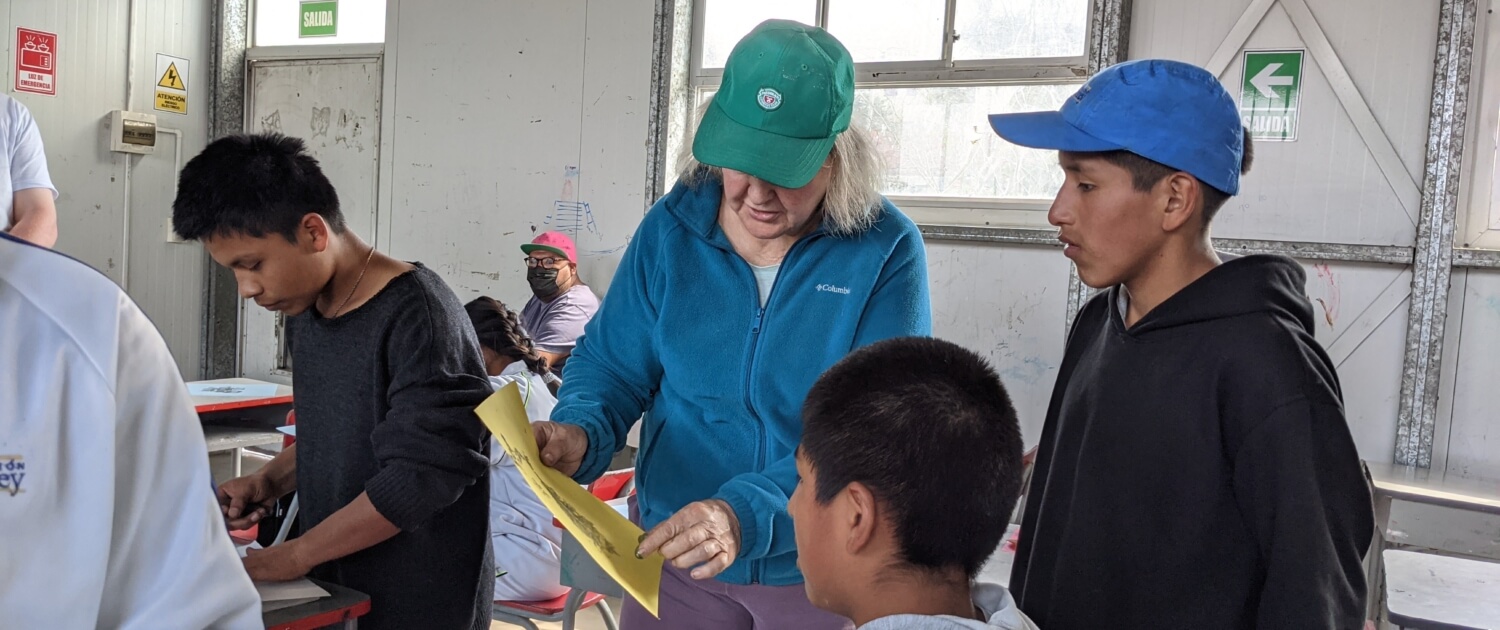
“There’s no way to describe the joy of having children running up to you and hugging you,” Suzanne affirms. “They’re so grateful to have us working with them.” As she instructs them to draw a free-form tree to paint and spray with a water-alcohol mix, she stops to answer a question shyly asked by a young boy in English fragments. She replies with a mix of equally fragmented Spanish and English. “It takes a lot of courage to use their English skills,” she asserts. “But, they’re trying, and it’s really impressive how hard they work at it.”
“There’s no way to describe the joy of having children running up to you and hugging you.”
Peru Volunteer Suzanne Popp
Through the open windows of a nearby classroom, young voices explode in harmony first in English, then Spanish, ending in screams of delight. “Very good, getting better. Let’s try it again and this time, let’s sing in very quiet voices,” says six-time Global Volunteer Kurt Jaeger, and hometown choir director. Three days are left to practice the song for the community farewell celebration honoring the team’s work together with the children. Kurt fits these rehearsals in between labor assignments – painting chairs, desks and walls – and the students’ class schedules. Music, he knows, bridges language gaps, transcends inequities and weaves a unifying thread throughout the two weeks of service.
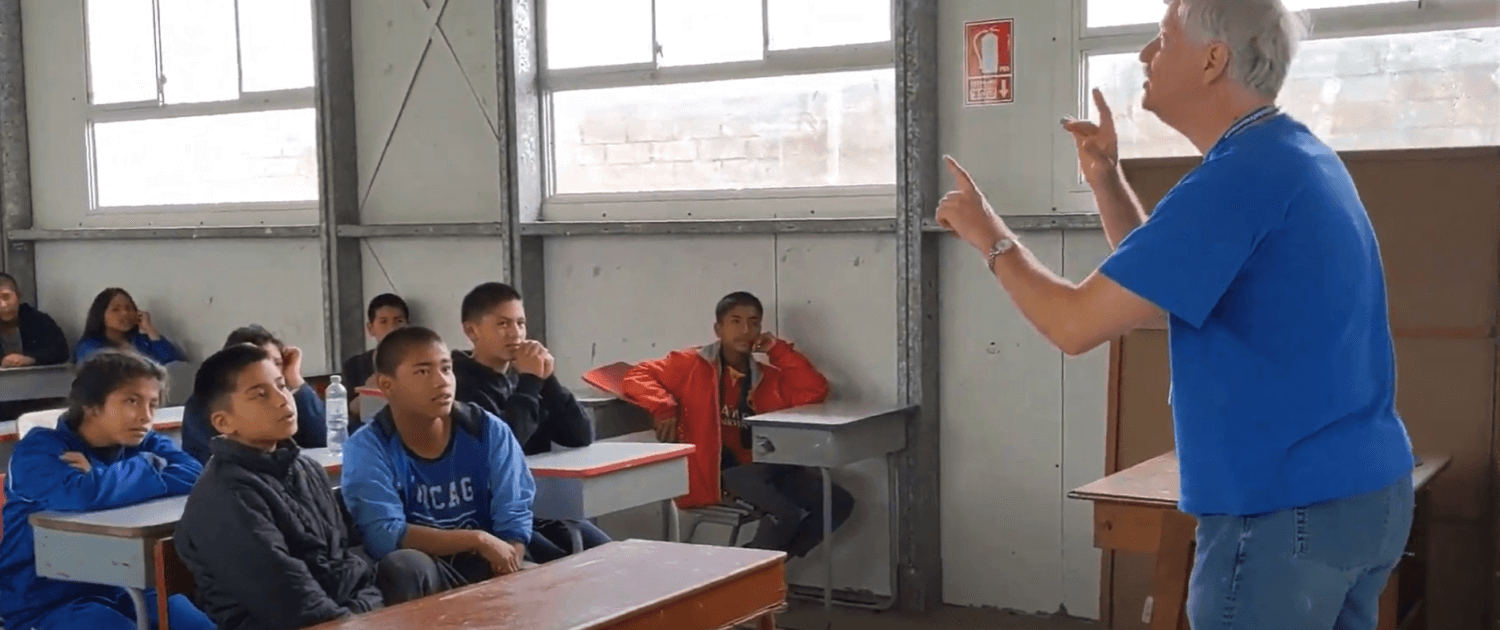
“I see this community as a source of goodness in the world,” Kurt says simply. “Miguel and the people who work with Miguel are teaching these kids how to be good human beings; how to be productive, caring and loving. He’s making the world a better place… by instilling those values in the children.” That’s why he returned as soon as the program resumption was announced. “Our role is to help make that happen. I see my role as providing skills and resources they don’t have. For instance, there’s no one here to lead a choir, so when I’m here, I can do that to help broaden the children’s experience.”
“I see this community as a source of goodness in the world.”
Peru Volunteer Kurt Jaeger
Outside the metal shop, desk frames are lined up along a retaining wall where girls and boys as young as 5 and as old as 17 share brushes and soda-bottle paint cups of primer and top coat. They position themselves atop narrow strips of cardboard intended to catch paint drips, but as more kids arrive, the careful organization dissolves into a haphazard swarm of happy “worker bees” surrounding the volunteers buzzing with Spanish and English conversation.
“It’s remarkable how these kids work together – the older ones helping the younger ones, patiently filling paint cups – and finding chairs for volunteers to sit on,” noted first-time volunteer, Las Vegas sales director Mel Shingleton.
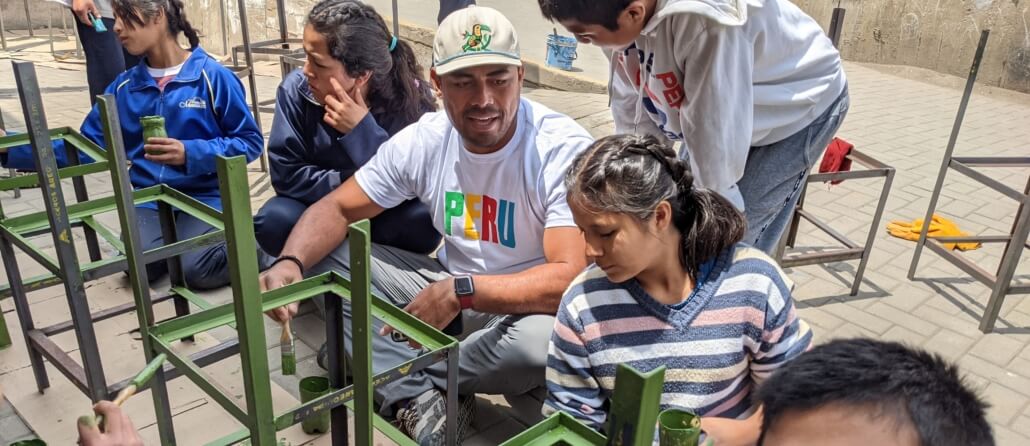
Mel’s childhood friend, two-time Peru Volunteer Casey Brooksby brought his 14-year-old son Boston with him to Sagrada Familia, hoping to share the inspiration of harmony and hope he found here just three years before. The pandemic delayed his planned return. “I was ready to come back as soon as the program reopened,” Casey asserted. “This is where I knew I wanted to bring Boston.” In his youth, Casey fulfilled his mission with the Mormon Church in Peru and found Global Volunteers’ work in the children’s community most closely matched his devotion to service. “I love the people of Peru and have kept in touch with many friends and the family I lived with,” he continued. “I have, over the years, felt very strongly that I needed to return and help where I can.”
“I needed to help where I can.”
Peru Volunteer Casey Brooksby
Casey and Boston leapt into action the first day onsite with Mel and four volunteers wielding scrapers, rollers, brushes and gallons of paint to restore a building facade with a dozen resident teens. The second day found them building bunk beds in the carpentry shop, and by the third day, they were outnumbered by throngs of children at the metal shop where newly constructed desks and chairs were being primed and painted. It was the dominant project for the rest of the week – with a new shift of students arriving each morning and afternoon to work with the volunteers.
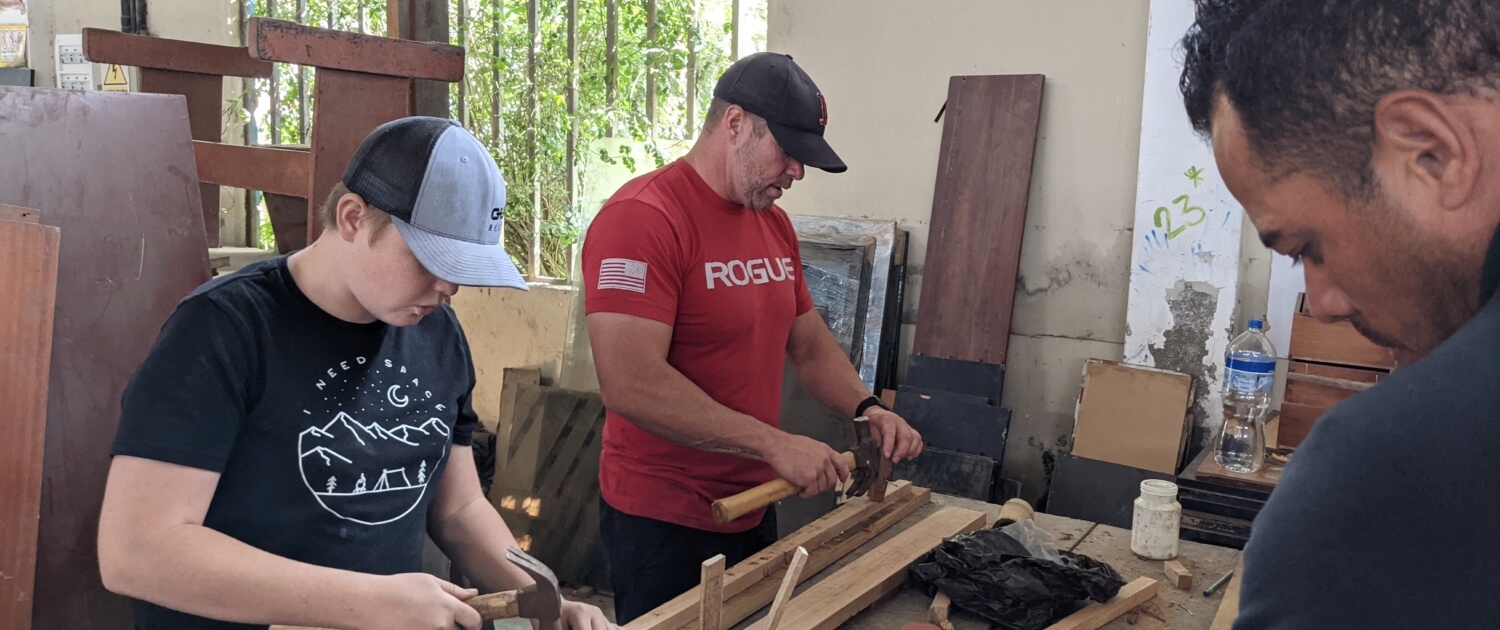
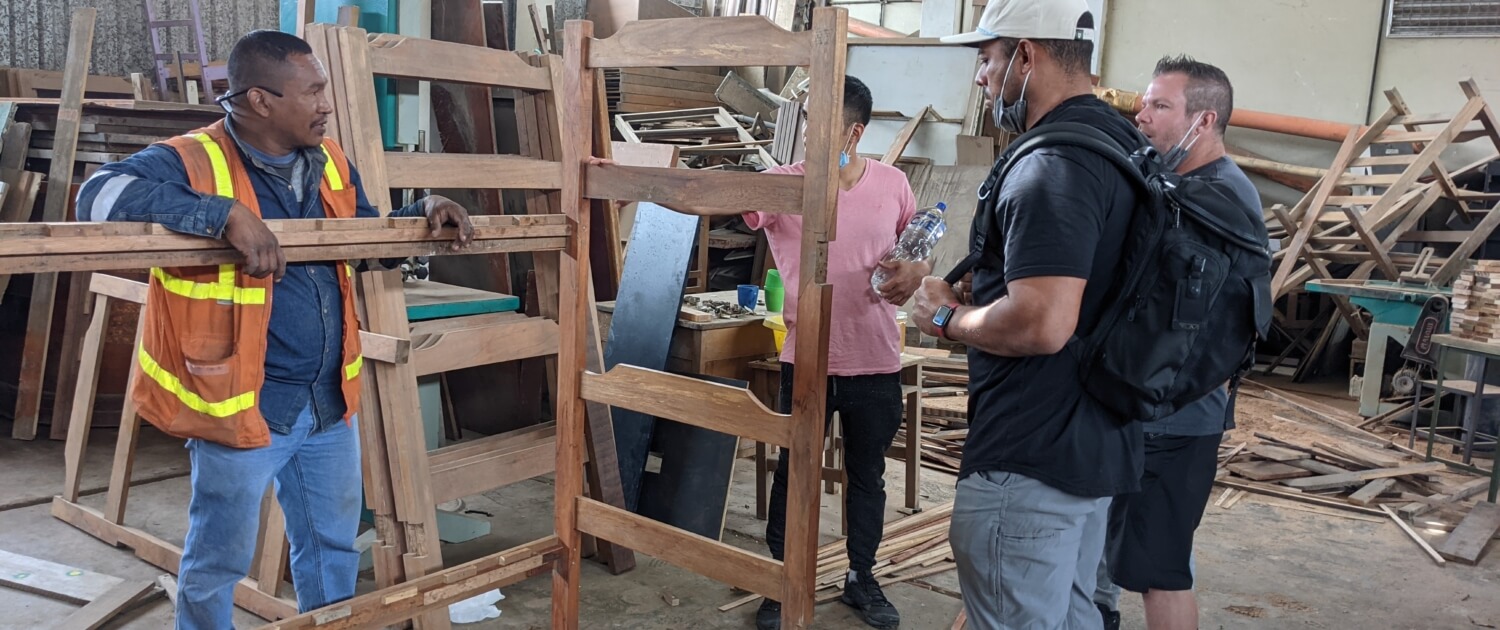
“It’s nice to be around people who are generous and caring, who genuinely love and help others. It’s inspiring and beautiful,” says Mel. “The tasks at the school have been pretty simple but fun and interactive. I have not seen one child complain about the work. Each one is eager to jump in and help.”
In the kitchen, Global Volunteers Nick Philbrook and Suzanne’s husband Ken are robustly chopping vegetables for the lunch meal for more than 200 students, staff, and volunteers.
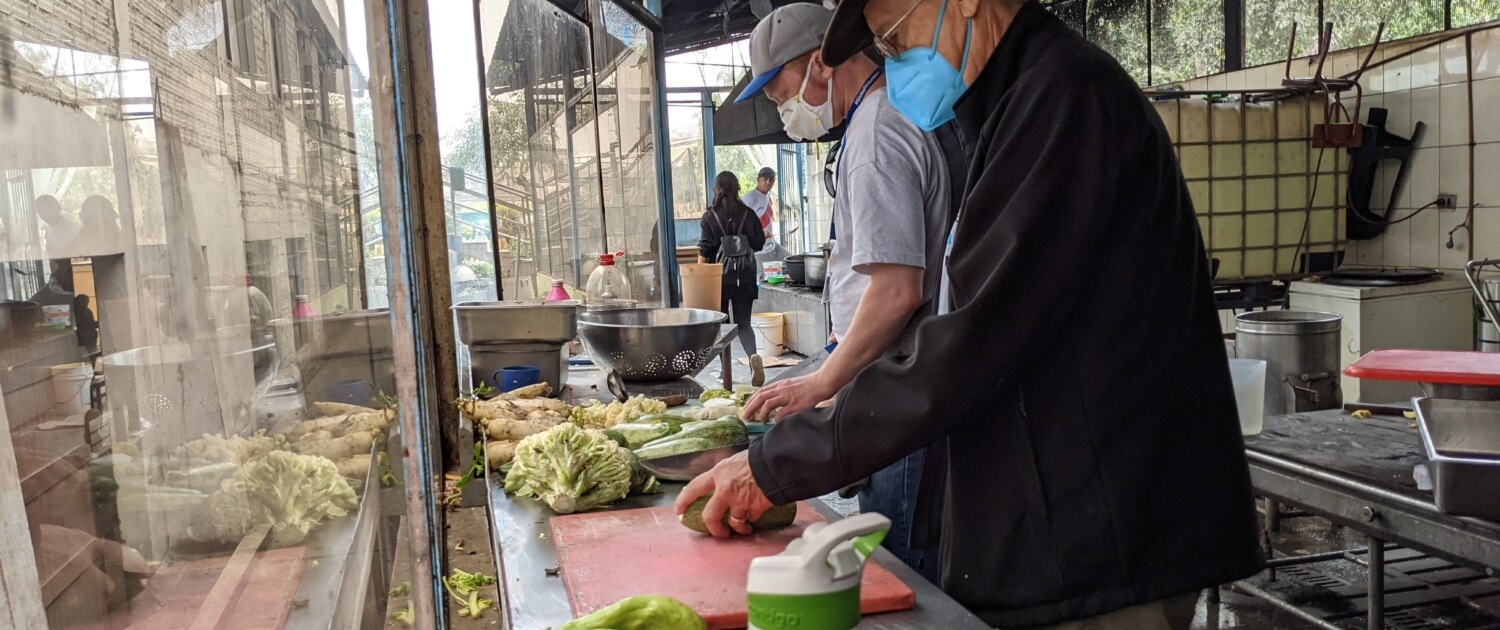
“Each day has been very different in many ways, but one thing is always constant, and that’s the children’s welcome to us,” Nick says. “For instance, today when we arrived, they were practicing a national dance on the soccer field. They immediately invited us in to dance with them – patiently instructing us and encouraging us to follow their lead.”
“Each day has been special in its own way and taught me something new,” Mel added. “Today it was gratitude. Not gratitude for what I have or blessed with temporally. But gratitude for this earthly experience and means to be here and to give of my time, energy, and spirit. Gratitude for the energy and spirit of these children of our Heavenly Father. And the bright smiles and love they each share. I love the quote by Jeffrey R. Holland: ‘Don’t wait to live, this isn’t a rehearsal. This isn’t a dry run, this isn’t a pre-performance routine. This is it. This is real life. Don’t wait, savor every minute.’ Well, today we lived!”
Request information >>You may also enjoy:
Children’s Community in Peru Looks Beyond The Pandemic
